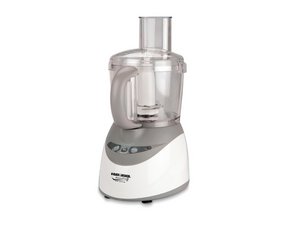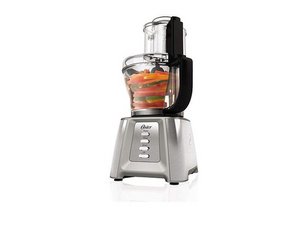|
1 Antwoord 0 Score |
Mengkom niet correct geplaatst |
|
10 Antwoorden 6 Score |
Food processor is not working |
|
4 Antwoorden 2 Score |
Should I self repair the TM5 scales? |
|
2 Antwoorden 3 Score |
How to reset the C150 error? |
Modellen
4KFP740WH1, AT647, D895C, D895UX, DFP250, DFP735, DFP950, FP250, FP3020, FP950, FP959, FPM250, FPM910, K600FPWH, K650FPWH, KFP740CR0, KFP740QBF3, KFP740QBW3, KFP740QER2, KFP740QGC2 Toon 12 meer
KFP740QOB3, KFP740QWH3, KFP740WH0, KFP740WH1, KMC010, KMC011, KMC013, KMM020, KMM021, KMM023, MGX400, MQ70
Achtergrond en identificaties
Keukenmachines zijn zo genoemd omdat ze repetitieve voedselbereidingstaken veel gelijkmatiger, efficiënter en sneller kunnen uitvoeren dan een mens zou kunnen. Keukenmachines kunnen meestal worden gecombineerd met verschillende messen en hulpstukken, waardoor verschillende functies mogelijk zijn, zoals pureren, snijden, raspen en malen. Een S-vormig mes (ook wel een Sabatier-mes genoemd), snijschijven en raspschijven zijn standaard hulpstukken voor keukenmachines. Andere veelgebruikte hulpstukken zijn onder andere een deegmes, eierklopper, citruspers, julienne-snijschijf en frietschijf.
De keukenmachine werd voor het eerst geproduceerd in Noord-Amerika in 1973 door Carl Sontheimer. Toen het publiek het ware gemak van dit apparaat besefte, werd het een vast onderdeel in restaurants en huishoudens. Tegenwoordig worden keukenmachines gemaakt door diverse fabrikanten van keukenapparatuur, waaronder Oster, KitchenAid en Breville.
Keukenmachines zijn er in verschillende vormen, maten en kleuren. De meeste zijn ontworpen om op een aanrecht te plaatsen en hebben een transparante kom om ingrediënten in te doen. Keukenmachines hebben ook een bedieningspaneel, een motor en meestal een stekker.
Aanvullende informatie
Met dank aan deze vertalers:
100%
Toon Konings helpt ons de wereld te repareren! Doe je mee?
Begin met vertalen ›

















